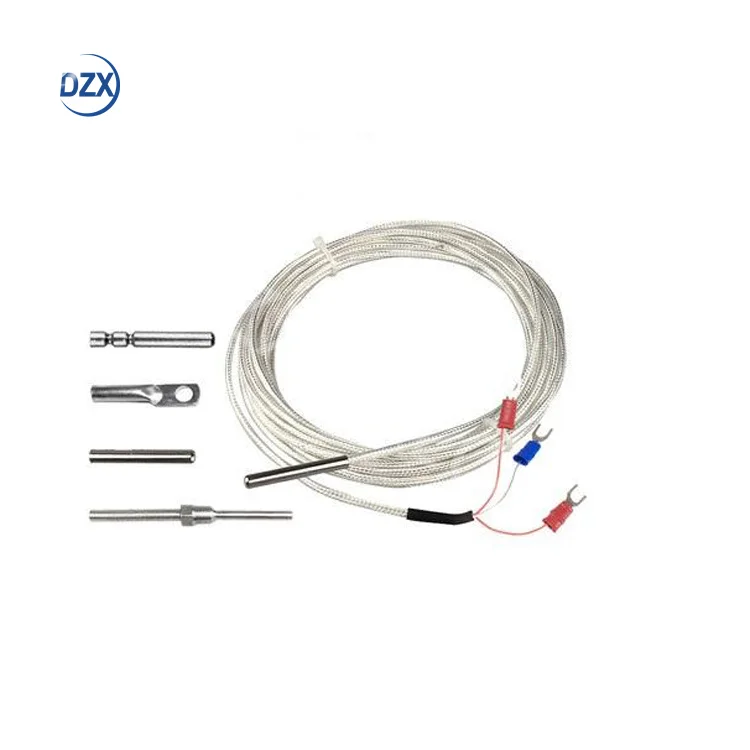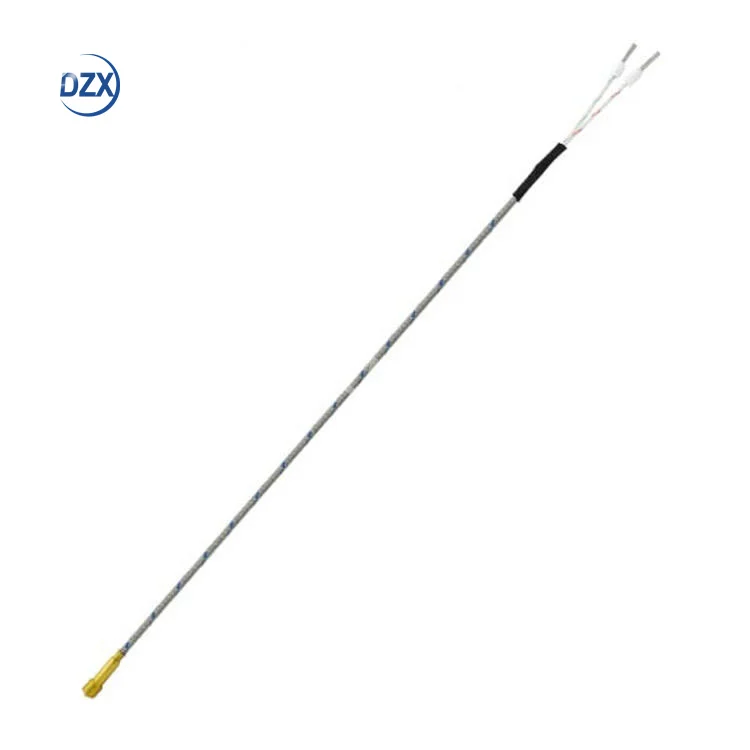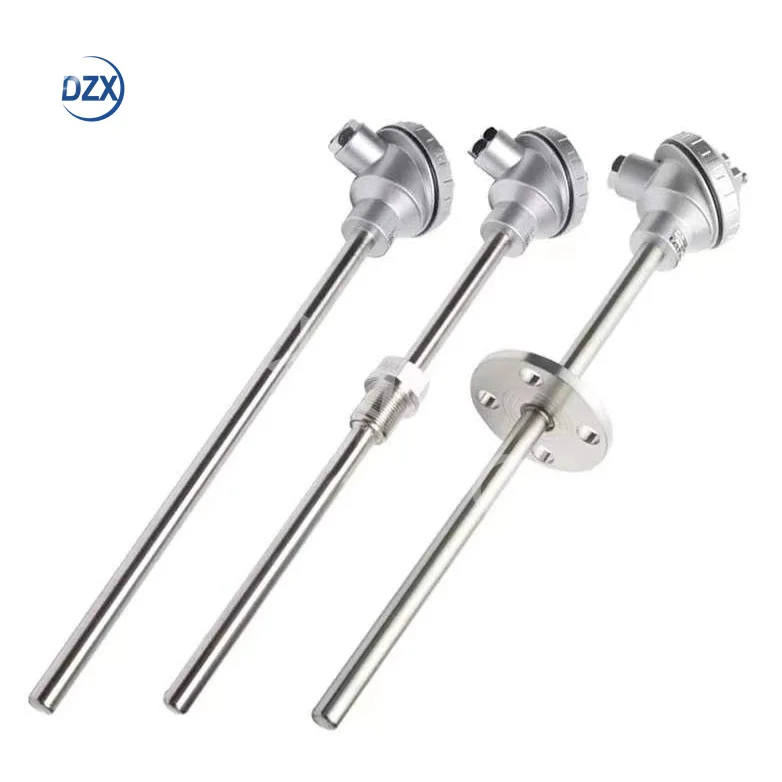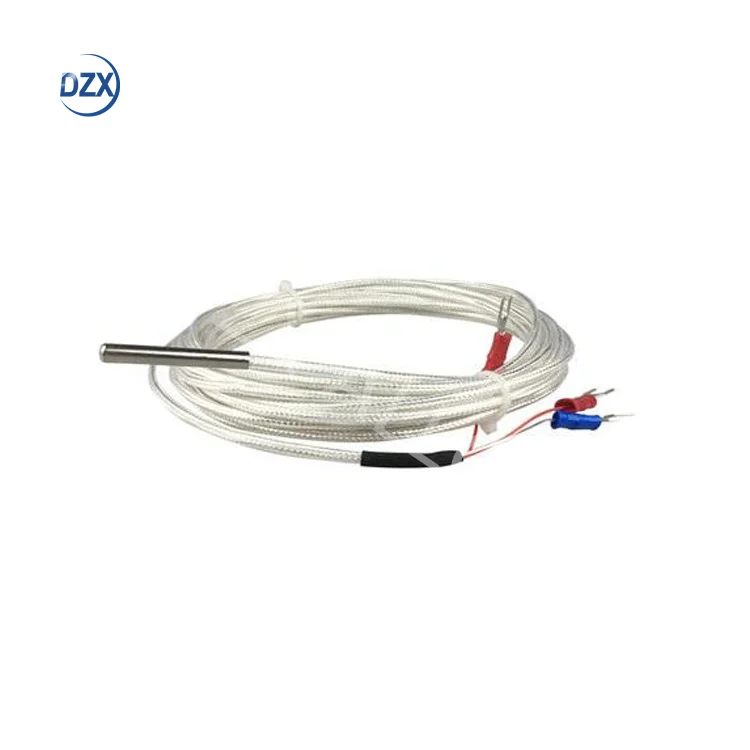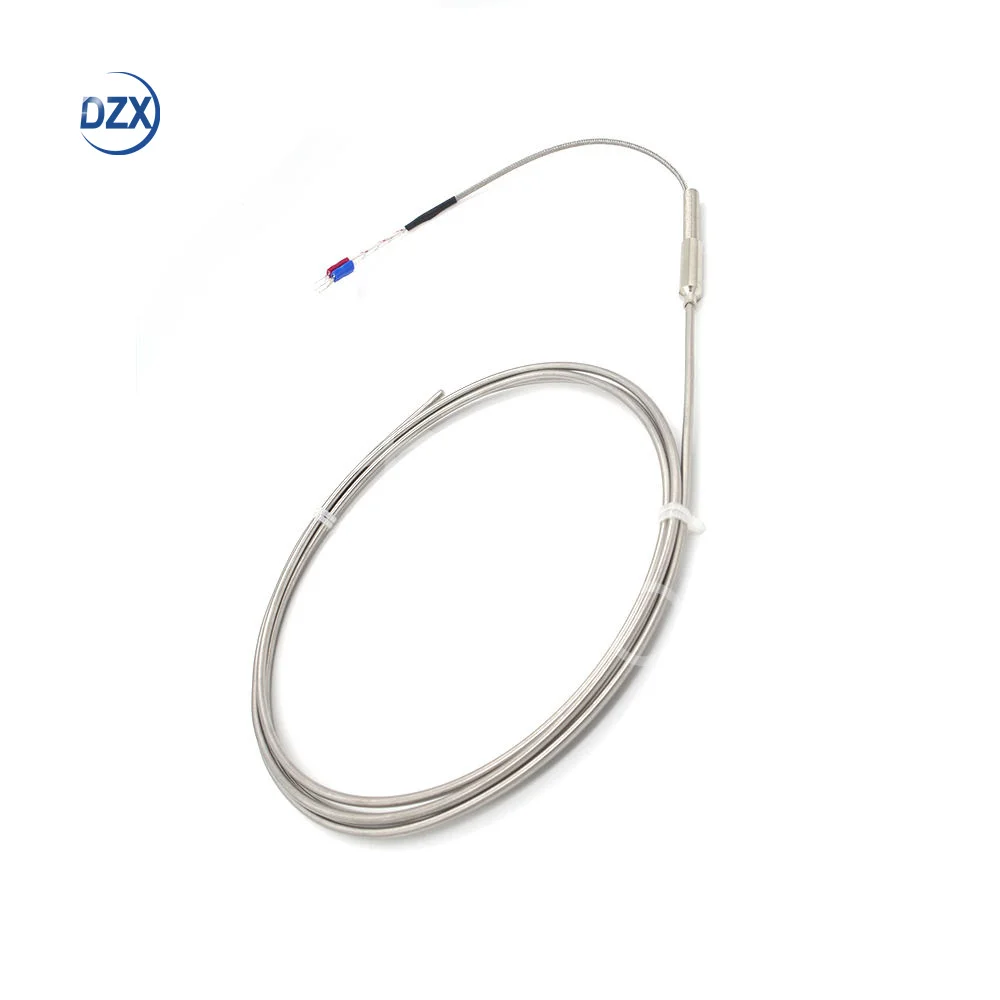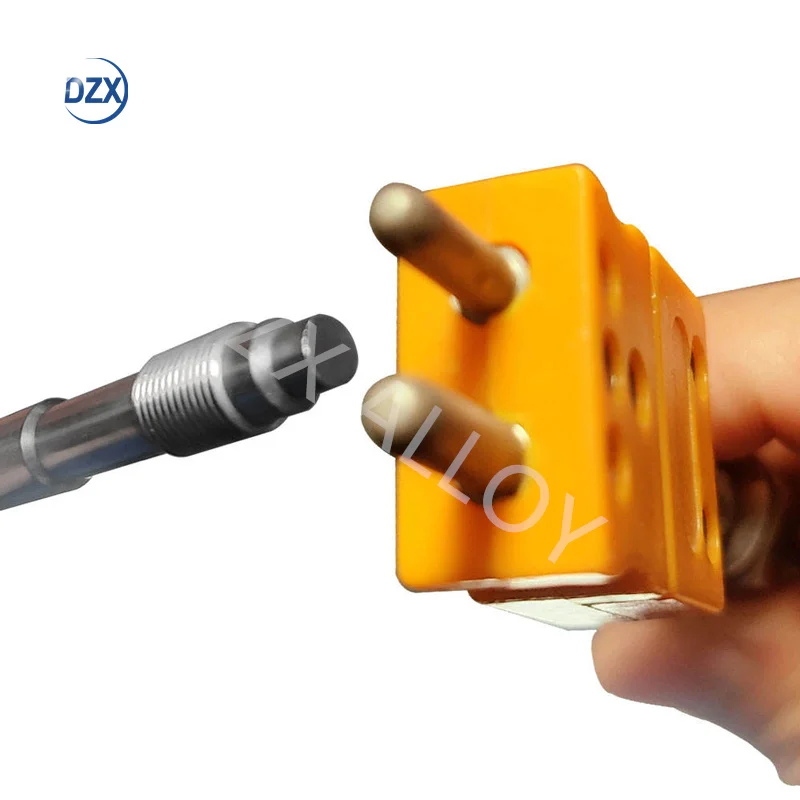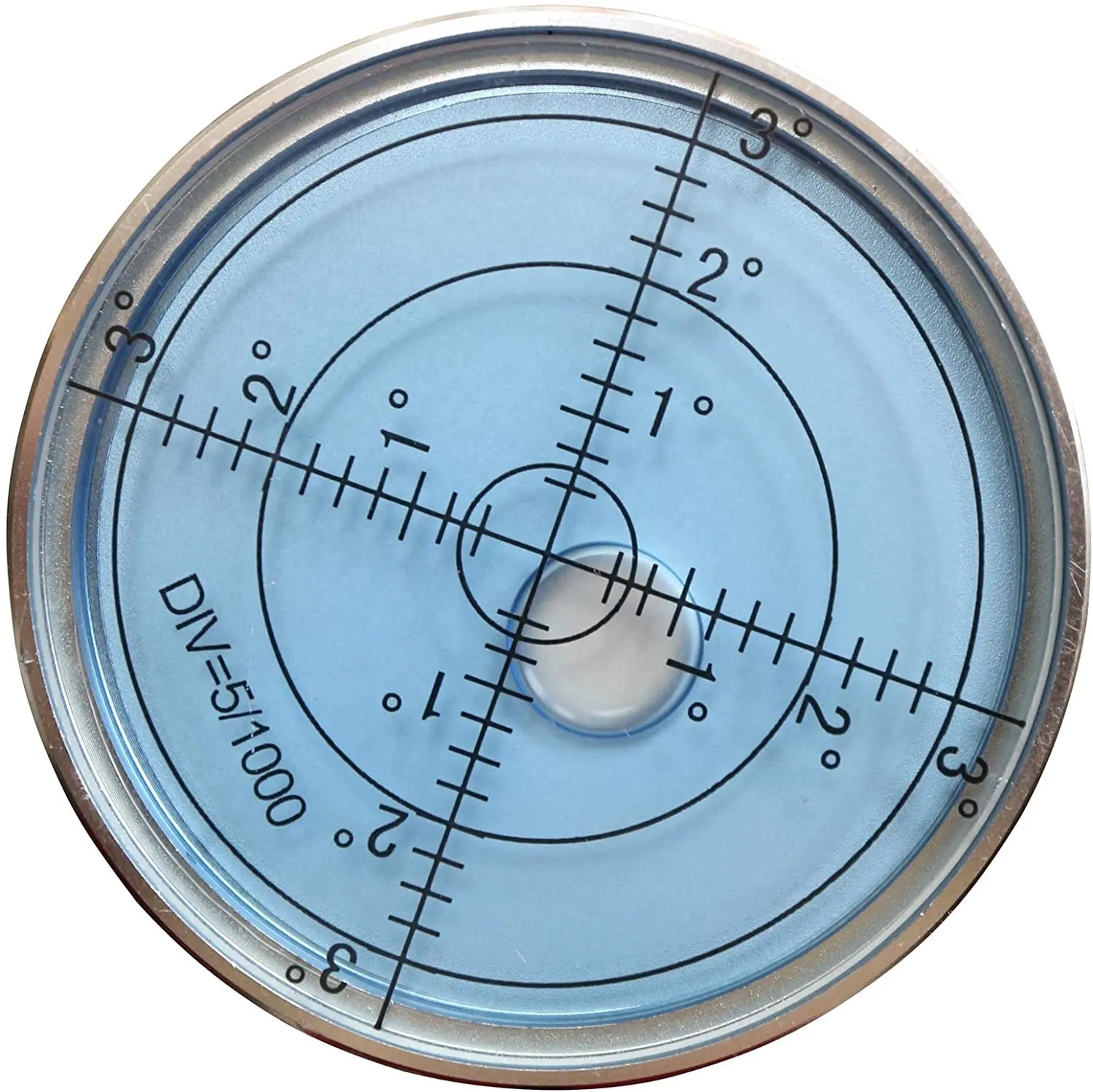Type B Thermocouple (Platinum Rhodium – 30% / Platinum Rhodium – 6%): The Type B thermocouple is used in extremely high
temperature applications. It has the highest temperature limit of all of the thermocouples listed above. It maintains a high level
of accuracy and stability at very high temperatures. The type B has a lower output than the other noble metals (type R & type S)
at temperatures below 1,112F (600C).
Type B Temperature Range:
* Thermocouple grade wire, 32 to 3100F (0 to 1700C)
* Extension wire, 32 to 212F (0 to 100C)
Accuracy (whichever is greater):
* Standard: +/- 0.5%
* Special Limits of Error: +/- 0.25%
Type R Thermocouple (Platinum Rhodium -13% / Platinum): The Type R is used in very high temperature applications. It has a higher
percentage of Rhodium than the Type S, which makes it more expensive. The Type R is very similar to the Type S in terms of
performance. It is sometimes used in lower temperature applications because of its high accuracy and stability. Type R has a
slightly higher output and improved stability over the type S.
Type R Temperature Range:
* Thermocouple grade wire, -58 to 2700F (-50 to 1480C)
* Extension wire, 32 to 392F (0 to 200C)
Accuracy (whichever is greater):
* Standard: +/- 1.5C or +/- .25%
* Special Limits of Error: +/- 0.6C or 0.1%
Type S Thermocouple (Platinum Rhodium - 10% / Platinum): The Type S is used in very high temperature applications. It is commonly
found in the BioTech and Pharmaceutical industries. It is sometimes used in lower temperature applications because of its high
accuracy and stability. The type S is often used with a ceramic protection tube.
Type S Temperature Range:
* Maximum continuous operating temperature: up to 2,912F (1600C)
* Short term use: up to 3,092F (1,700C)
* Thermocouple grade wire, -58 to 2700F (-50 to 1480C)
* Extension wire, 32 to 392F (0 to 200C)
ccuracy (whichever is greater):
* Standard: +/- 1.5C or +/- .25%
* Special Limits of Error: +/- 0.6C or 0.1%
Consideration for bare wire type J thermocouple applications:
* The Type S can be used in inert and oxidizing atmospheres up to 2,912F (1600C) continuously and up 3,092F (1,700C) for short
term use.
DZX горячая Распродажа байонетная термопара термоэлемент из нержавеющей стали
- Категория: Instrument Parts & Accessories >>>
- Поставщик: Jiangsu,Dzx,Technology,Co.,Ltd.
Поделиться:
Описание и отзывы
Трекер стоимости
| Месяц | Минимальная цена | Макс. стоимость |
|---|---|---|
| Sep-16-2025 | 0.73 $* | 0.95 $* |
| Aug-16-2025 | 0.26 $* | 0.18 $* |
| Jul-16-2025 | 0.75 $* | 0.88 $* |
| Jun-16-2025 | 0.65 $* | 0.91 $* |
| May-16-2025 | 0.7 $* | 0.75 $* |
| Apr-16-2025 | 0.37 $* | 0.93 $* |
| Mar-16-2025 | 0.77 $* | 0.55 $* |
| Feb-16-2025 | 0.20 $* | 0.73 $* |
| Jan-16-2025 | 0.75 $* | 0.79 $* |
Характеристики
Product Description
Features:
1) Continuous use up to 200℃
2) Short term use up to 250℃
3) Excellent heat, chemical, abrasion and moisture resistance
4) Provides accurate temperature measure with high temperature stability
5) Calibration test report is available
Model explanation:
1 Calibration: Type K
2 Conductor insulation: FEP
3 Jacket insulation: FEP
4 Outer shield: Stainless steel braiding
Detailed Images
Our Company



Packing & Delivery
FAQ
Q:How can I contact your company?
A:We are always ready to serve you via Email, Telephone, Fax, Skype, Whatsapp or Mobile
Q:Do you provide free samples?
A:Yes, we can provide a free sample for testing,buyer should bear all the shipping costs.
Q:What is your payment terms?
A:T/T,L/C,D/A,D/P,Western Union,MoneyGram,Paypal
Q:What is the lead time?
A:Usually sample lead time is 7 days after payment has been confirmed.
A:We are always ready to serve you via Email, Telephone, Fax, Skype, Whatsapp or Mobile
Q:Do you provide free samples?
A:Yes, we can provide a free sample for testing,buyer should bear all the shipping costs.
Q:What is your payment terms?
A:T/T,L/C,D/A,D/P,Western Union,MoneyGram,Paypal
Q:What is the lead time?
A:Usually sample lead time is 7 days after payment has been confirmed.
